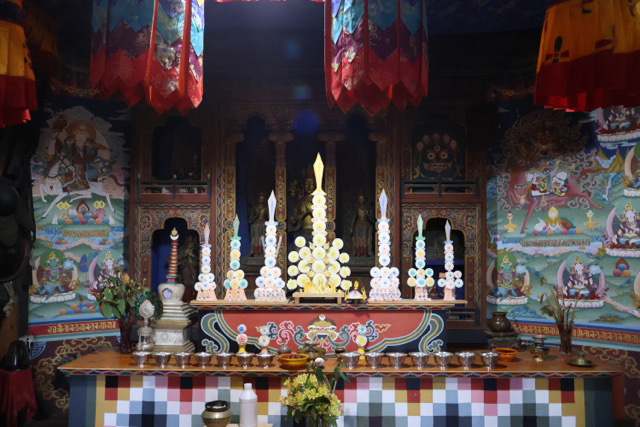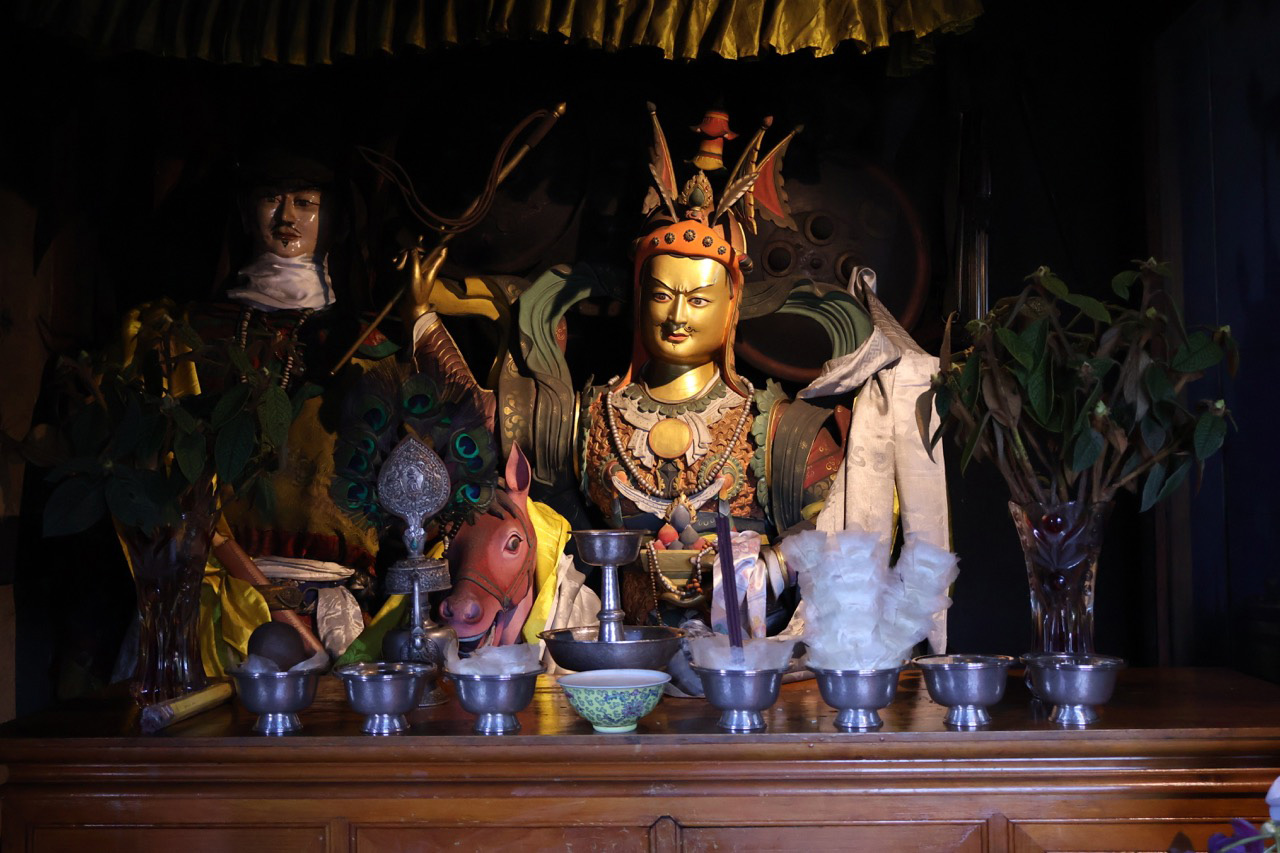Royal Heritage Museum
Temples in the Royal Heritage Museum
Temple of Maitreya Buddha

On the second floor of the museum’s main tower (utse), this Temple of Maitreya Buddha houses a revered yet concealed image of Drang Song, the most powerful protector of Taa Dzong. The lhakhang (temple) enshrines bodhisattvas statues embodying compassion, wisdom, and power.
The central and largest statue on the altar represents Maitreya, on the left is the Manjushri and on the right, Vajrapani. They form a trinity that is highly venerated and widespread throughout the Tibetan world. Next to this group of three, is a beautiful and impressively executed figure of the eleven-headed Avalokiteshvara, the bodhisattva of compassion.
Deeply rooted in Mahayana Buddhist philosophy, this sacred hall symbolizes enlightenment, protection, and the transformation of negative forces into virtues, offering a space of deep spiritual resonance. In front of the altar, an offering table holds a variety of sacred offerings to honor the deities, such as butter lamps, flowers, and different kinds of food.
The walls of the lhakhang are adorned with intricate murals featuring hundreds of depictions of the goddess Tara. Each representation of Tara embodies the protective activity of enlightened compassion, symbolizing her role as a guardian and guide for all beings. Since enlightenment flourishes through active compassion, Tara is revered as the Mother of all Buddhas, the wisdom of reality and also the fundamental cause of happiness.
Temple of Ling Gesar

Located on the top floor of the North Wing, the Temple of Ling Gesar offers a sacred space dedicated to King Gesar, a revered hero and spiritual warrior in Himalayan culture. Visitors can enter the temple and experience how local people worship Gesar for protection and success.
While Gesar is celebrated as a God of War, he personifies the triumph of spiritual victory over earthly obstacles. Known for his metaphorical battles against demonic forces, he serves as a protector of Buddhist teachings.
The royal family holds King Gesar in particularly high regard. It is said that after the cremation of Bhutan’s first king, Ugyen Wangchuck, his spirit ascended to heaven on a horse, joining King Gesar in the celestial realm.
Through these rituals, Gesar’s legacy endures, both as a protector in times of conflict but as a cosmic figure representing the victory of good over evil. His horse and weapons serve as metaphysical symbols of his role in the spiritual battles that ensure peace and harmony for the people of Bhutan and beyond. The people of Bhutan continue to invoke Gesar’s protection, and his legacy, intertwined with the teachings of Vajrayana Buddhism, is preserved through rituals, mandalas, and offerings.
